*********************************************************************************************************************************************
Brush Type 2 - Class 31 locomotives
*********************************************************************************************************************************************

Brush Class 30 D5500 in original livery. When first introduced these locos had a steam-era
approach of numbers on both cabsides at the 'A' end only, quite quickly this was replaced
by numbers at all four corners, then eventually at opposite corners during the TOPS era.
The Mirlees engined Class 30s were all later modified to Class 31 by re-engining. This model
is a modified Airfix bodyshell on a Lima chassis representing it in its 1960/61 livery for
use on Canada Street in the London and Great Eastern segways.

31014 is a detailed Lima model for the Lesney Park layout and represents a 'skinhead' Stratford
allocated example.

31101 is another single motored Lima model from the Eastwell fleet, with strategically placed
lead weights to improve its performance.
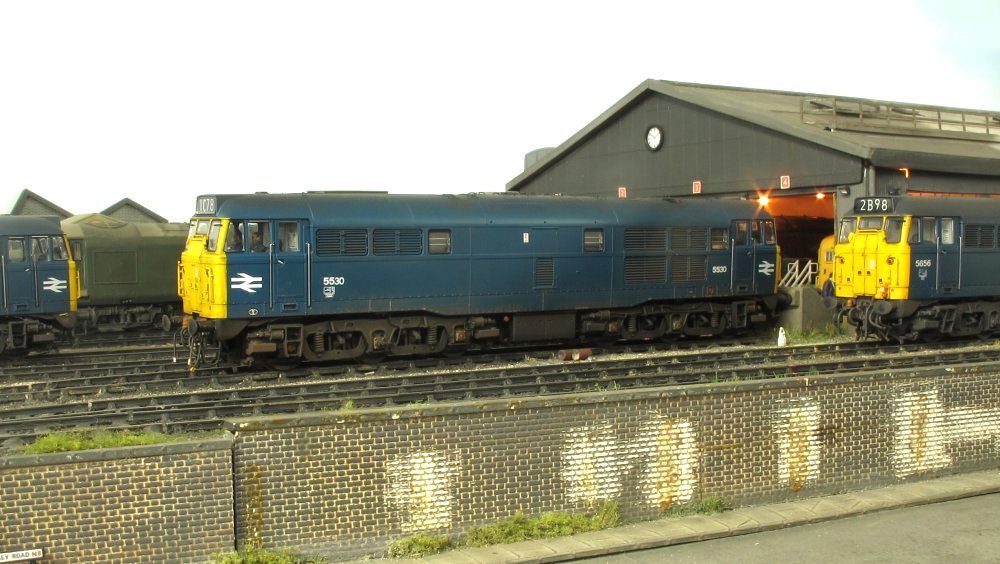
Brush type 2 number 5530 is an Old Oak Common allocated loco, seen here in the
presence of its Eastern Region sisters at Hornsey Road depot, carrying a 1C78 headcode
used on a previous Paddington - Hereford working.

Alongside 47369 is 31117, previously a Shenston Road model and now part of the Eastwell fleet.

Brush type 2 number 5552 is a Lima double motored model seen here on the 1B66 service to Cambridge.

A pair of Shenston Road Brush 2s performing suburban duties at Hornsey Broadway, 5557 heading for
Kings Cross with a rake of non corridor stock, whilst sister loco heads north with the Cambridge Buffet.

From the Eastwell fleet - Brush type 2 5561, a Lima loco fitted with twin Hornby Railroad bogies.
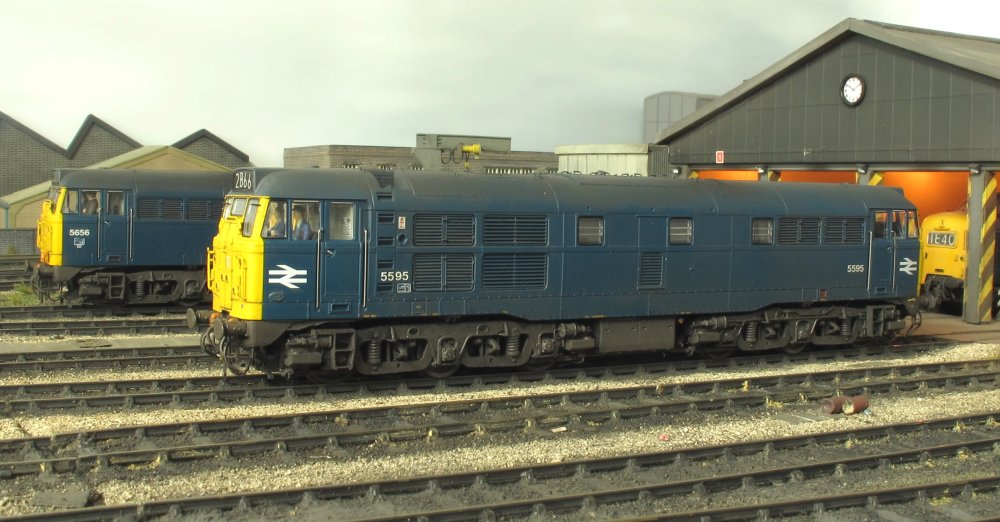
Dual braked and tripcock fitted 5595 is a Finsbury Park allocated Brush type 2. After the
fitting of bufferbeam pipework and weathered to a photograph circa 1970, she's ready for
service and is captured here at Hornsey Road depot. Model by Accurascale.

Green liveried 5610 is another Finsbury Park dual braked Class 31 with trip cock apparatus.
Model by Accurascale.
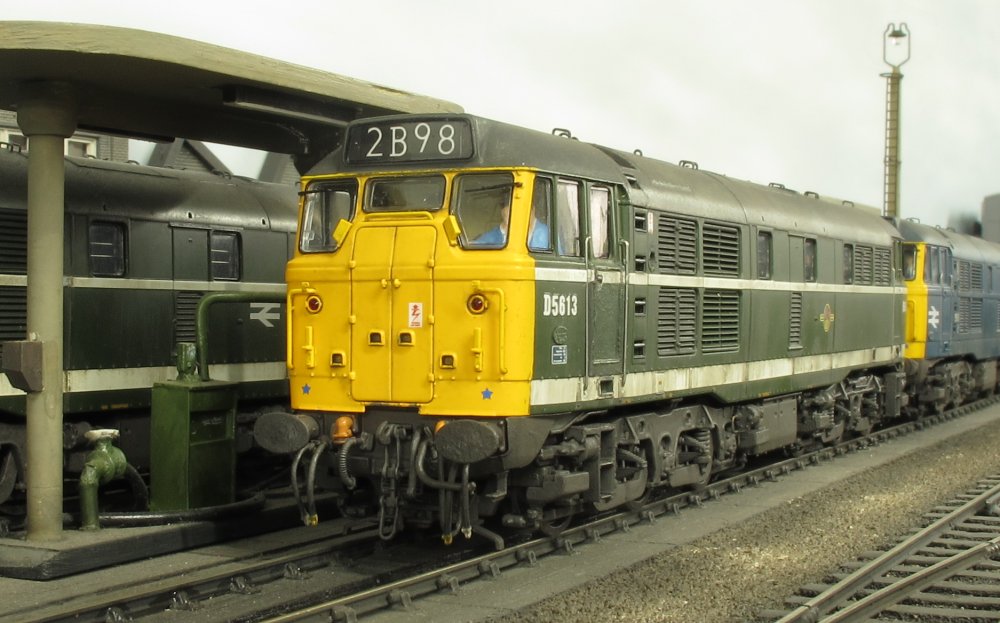
Brush type 2 D5613 is captured on the fuelling point at Hornsey depot.
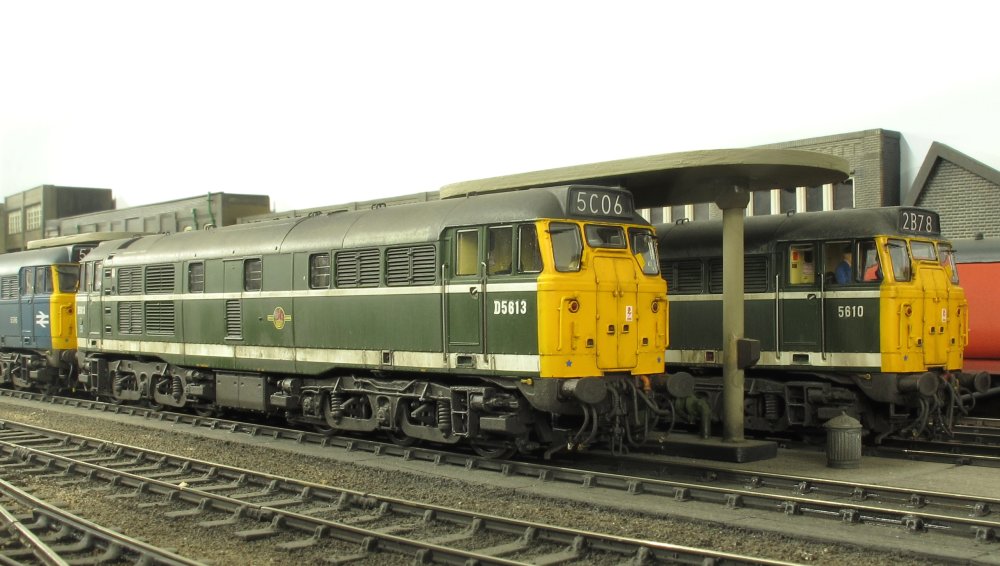
D5613 and 5610 (both Accurascale).
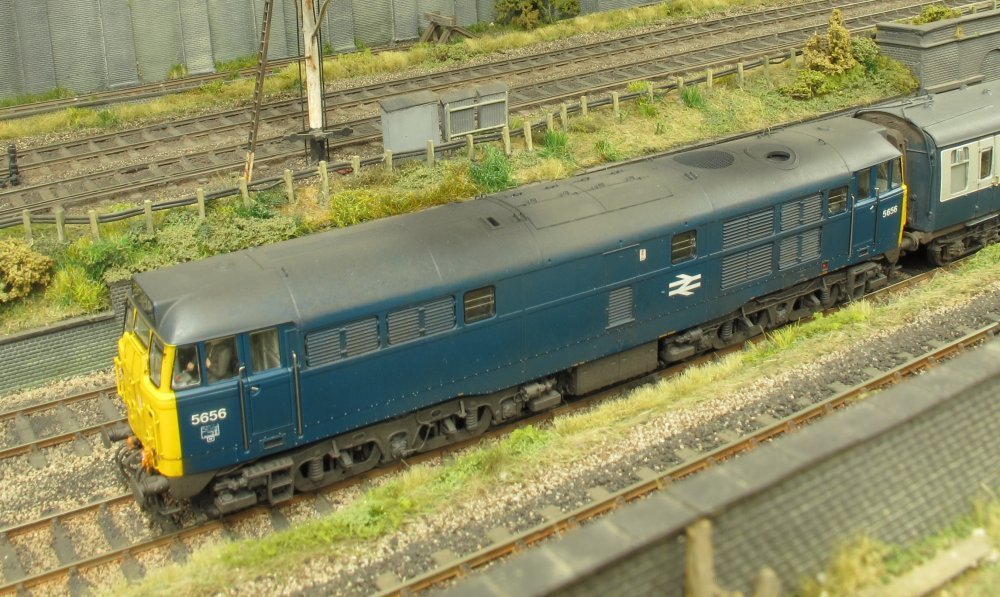
Looking down on 5656 at the head of the Cambridge Buffet service. The loco is a dual braked
and ETH equiped locomotive and is one of a batch of 17 locomotives (D5545, D5655-70) that
had uprated 1600hp engines from new, easily identified externally by an additional cover
plate on the other side of the roof adjacent to the main radiator fan, for maintenance
access to the additional coolant header tank. Model by Accurascale.
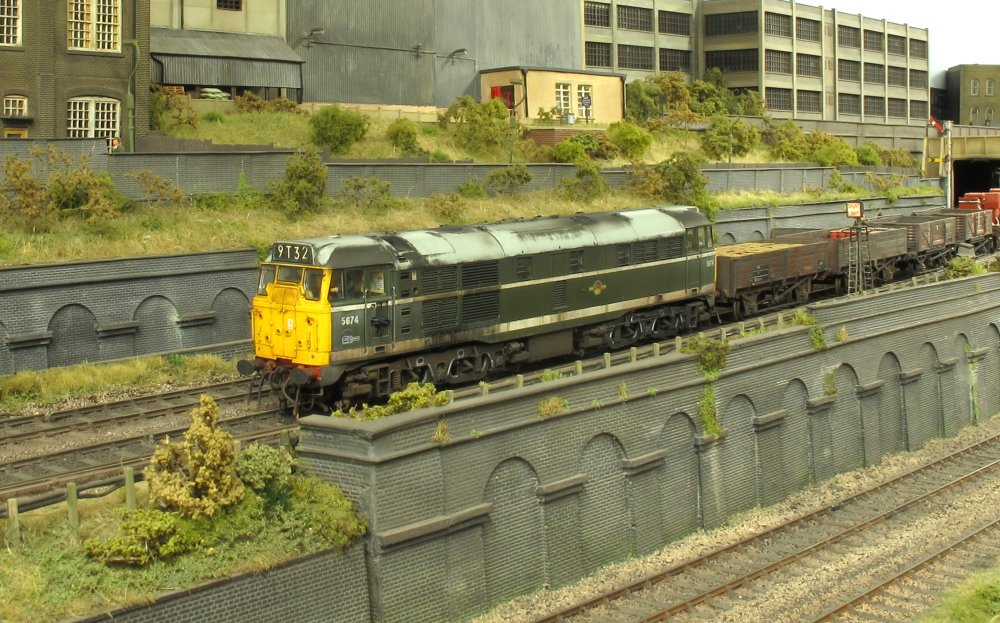
Shenston Road's 5674 (Accurascale) is spotted at Hornsey Broadway with a mixed freight.

D5683 in a 1969 appearance. Based on the Lima model, the main re-work has been to enlarge the
headcode display slightly, then the usual handrail and lamp bracket work in brass, followed by
26 pieces of glazing to cut and fit - but worth it in the end.

31272 started life as a detailed and EM converted Airfix model but it never ran very well, so it
was modified to fit on a Lima single motored chassis, then later converted with twin motors.

Airfix body / Lima chassis 31 279 (5809) based on how it appeared when seen at March
depot in the summer of 1976. Fresh glazing and etched wipers have been fitted along
with new headcodes, allocation stickers, and coupling code markings, making it ready
for use in late 1970s sequences.

Another Lima Class 31 for Canada Street - 5828 is pictured after weathering.

31409 - a Lima Class 31 with double motored Hornby Railroad bogies converted by Paul James.
*********************************************************************************************************************************************
Lima Class 31 with Hornby Railroad motor bogies
- by Paul James
*********************************************************************************************************************************************

I had been looking for alternative ways of powering some of my Lima Class 31 loco's running on Wibdenshaw. Some have been
double motored by splicing the relevant sections of chassis together, but having run out of doner parts and associated EM
conversion wheelsets, the expanding Hornby 'Railroad' range caught my eye. I had already converted some of my DMU fleet
with the new type of motors, so a suitable loco from the fleet was selected for a trial conversion using the co-co motor bogies
available on the Railroad class 37.

A hole was cut in the chassis 75mm long by 24mm wide to accept a motor at the non-powered end, with the pivot points needing
to be 58mm from the centre of the chassis.
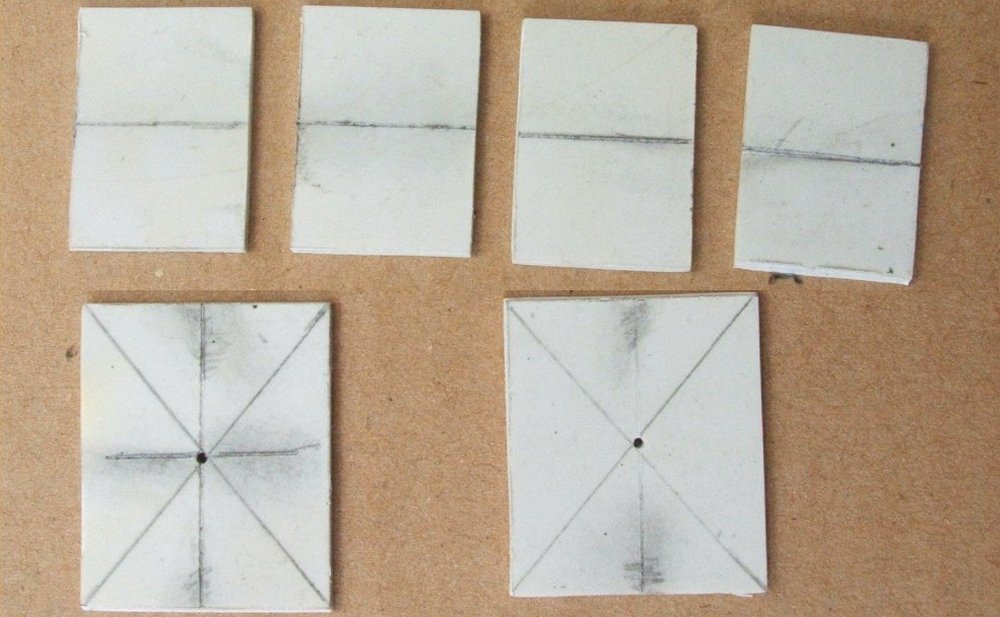
The mounting brackets for the two motors are fabricated from 2mm thick plasticard, fabricating the 4 side supports 25mm X
18mm high, and the 2 cross pieces 25mm X 30mm with a centre hole just large enough for the spigot on top of the motor
to push through (but not drop out). I drilled out to just undersize, and then using a round file opened up the hole until the
motor was a gentle push fit.

A close-up view of the mounting bracket showing a half-round packing piece between the motor bogie and the cross piece (fixed
lengthwise in line with the chassis), to allow the unit to pivot and adjust to any track irregularities.
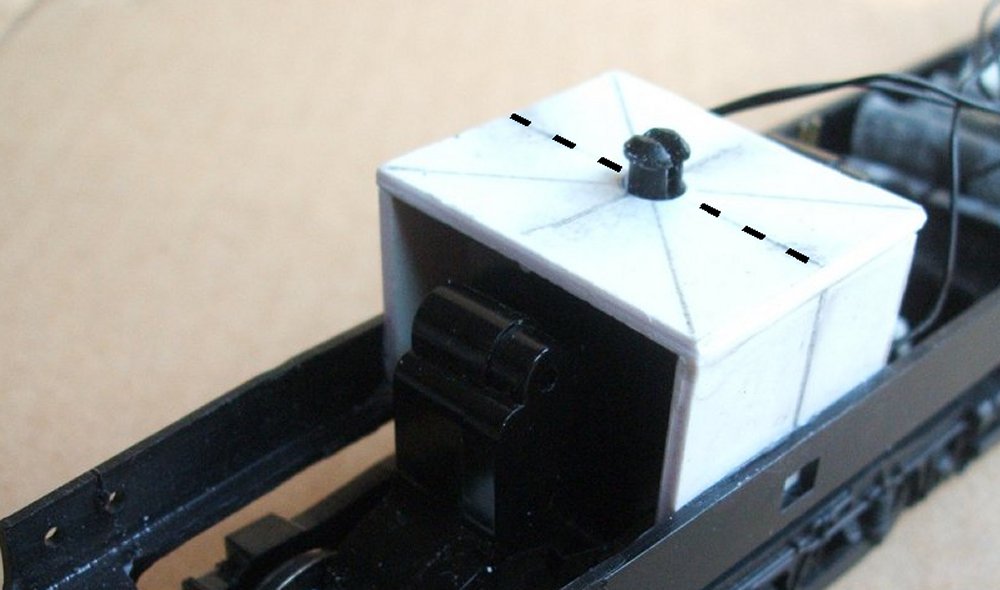
There is another half-round section on the other motor mount (shown by dotted line), which is fixed across the chassis and
allows the motor to pivot fore & aft, and effectively giving the loco an articulated 3-point suspension.
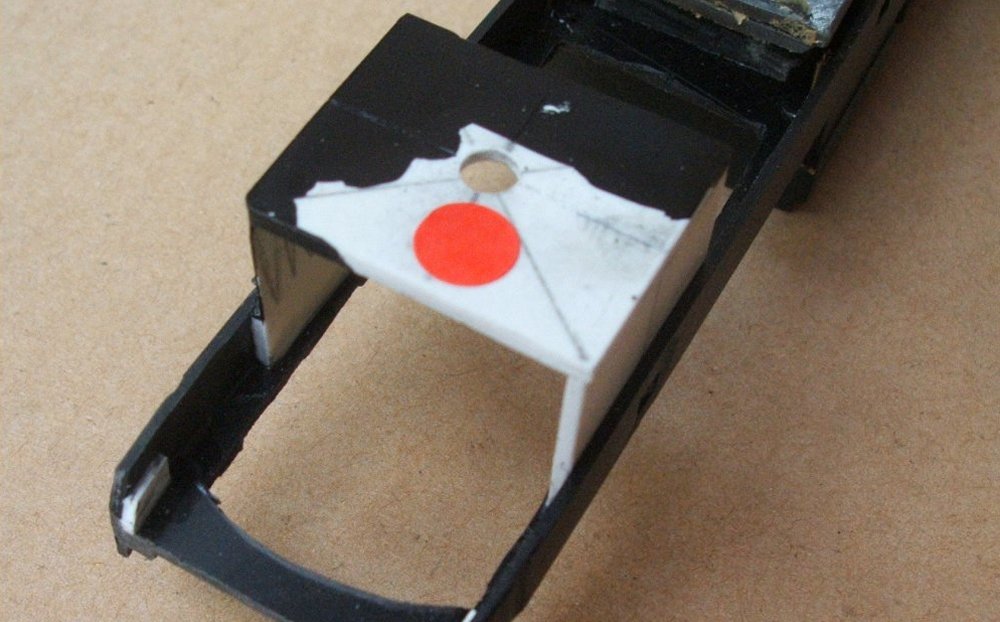
The Hornby motor bogie footprint is not
as large as the original Lima unit, so allows the buffer beam to be removed from the chassis and fitted to the body. This view
shows the new strengthening beam on the end of the chassis to ensure rigidity.

There is also enough room to fit a Hornby class 31 cab interior. Bufferbeam detail has been
added (sprung buffers, air pipes, MU jumpers and sockets), available as spare parts
here Front corner footsteps are fashioned from brass angle section,
and the Hornby class 50 ETH jumper cables and box are used, with a cut-down electrification warning sign applied.
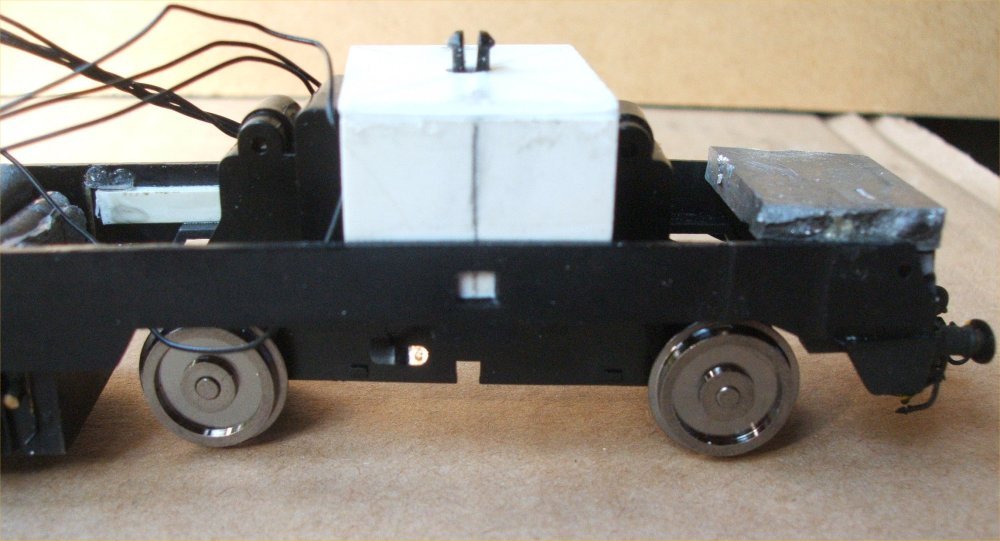
As the motor bogies were intended to power a class 37, new side frames would have to be fitted. Plenty of Lima unpowered bogie
frames were in my scrap box (from previous double motor conversions), and aren't too difficult to obtain secondhand.
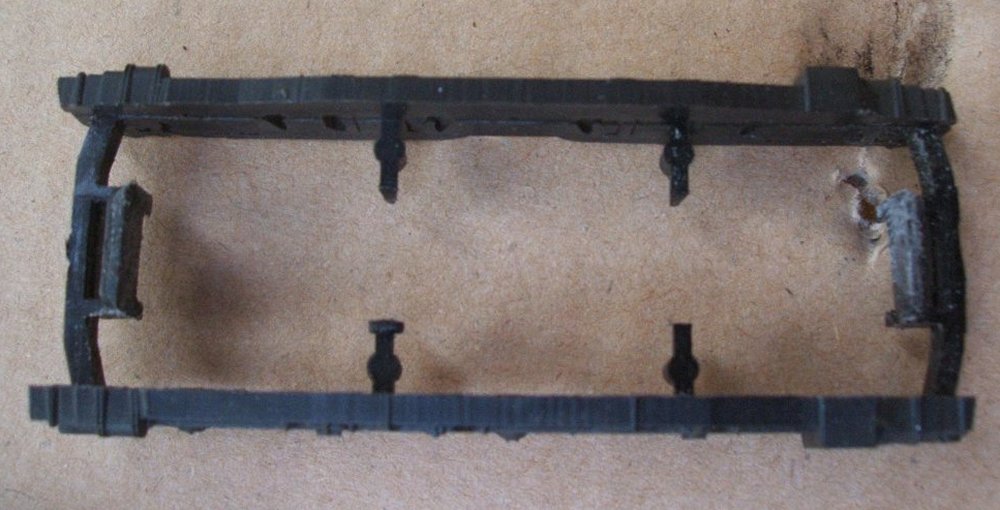
The centre section of the Lima bogie frame was cut out, leaving the side stretchers in place and making sure that enough of the end
block is retained to clip over the locating lugs on the motor bogie. This is the only tricky bit, as just enough has to be removed
to allow the Lima bogie to fit onto the Hornby unit, and with enough left to clip over the locating lugs.
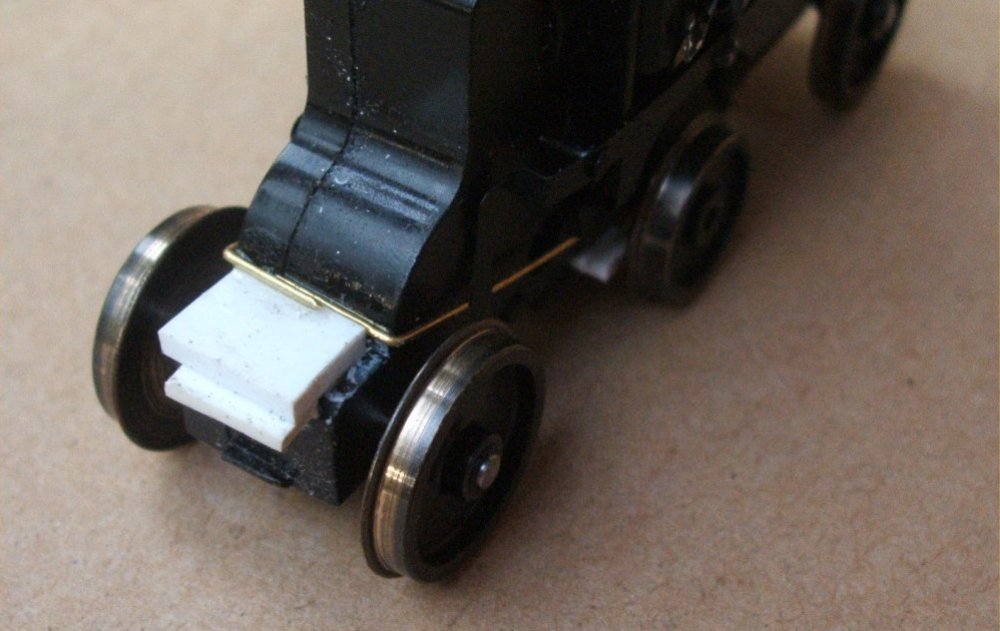
Modifications to the Hornby unit consisted of adding some plastic strip to stop the bogie frames sitting too high. The Hornby
plastic is the 'soft & soapy' type, and difficult to glue without roughing up the surface beforehand. Superglue does the job, although
care has to be taken not to glue the two halves of the motor bogie together, as it's designed to split for repairs and maintenance.

One of the completed motor bogies ready for fitting to the chassis.

The loco has been tested on both Hornsey Broadway and Shenston Road, with both layouts having suitable gradients for testing 8+
coaches in tow. Some lead weight had been added inside the battery boxes, with some already fitted in the loco body, providing that
essential weight for haulage and roadholding. All in all, it's been an interesting project that's injected a bit more life into a
20+ year old model, which is still held in high regard against the more modern offering.

The prototype seen at Kings Cross in 1981, with later added fan cowling on the roof.
*****************************************************************************************************************************************************************




































